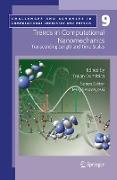- Start
- Trends in Computational Nanomechanics
Trends in Computational Nanomechanics
Angebote / Angebote:
Situated at the intersection of Computational Chemistry, Solid State Physics, and Mechanical Engineering, Computational Nanomechanics has emerged as a new interdisciplinary research area that has already played a pivotal role in understanding the complex mechanical response of the nano-scale. Many important nanomechanical problems concern phenomena contained in the microscopic or the continuum phenomenological scale. Thus, they can be simulated with traditional computational approaches, such as molecular dynamics (for the microscopic scale) and finite elements (for the continuum scale). More recently, significant advances in computational methodologies have made it possible to go beyond the distinct approaches mentioned above. By seamlessly linking the previously separated discipline methodologies, multi-scale aspects of the behaviour of nano-materials can now be simulated and studied from both fundamental and engineering-application viewpoints.
Trends in Computational Nanomechanics: Transcending Length and Time Scales reviews recent results generated via the application of individual or blended microscopic (from ab initio to tight binding to empirical force field) and continuum modeling techniques. It illustrates the significant progresses and challenges in developing multi-scale computational tools that aim to describe the nanomechanical response over multiple time scales and length scales ranging from the atomistic, through the microstructure or transitional, and up to the continuum, as well as the tremendous opportunities in using atomistic-to-continuum nanomechanical strategies in the bio-materials arena.
Trends in Computational Nanomechanics: Transcending Length and Time Scales is a useful tool of reference for professionals, graduates, and undergraduates interested in Computational Chemistry and Physics, Materials Science, and Engineering.
Lieferbar in ca. 20-45 Arbeitstagen
